Klei fay
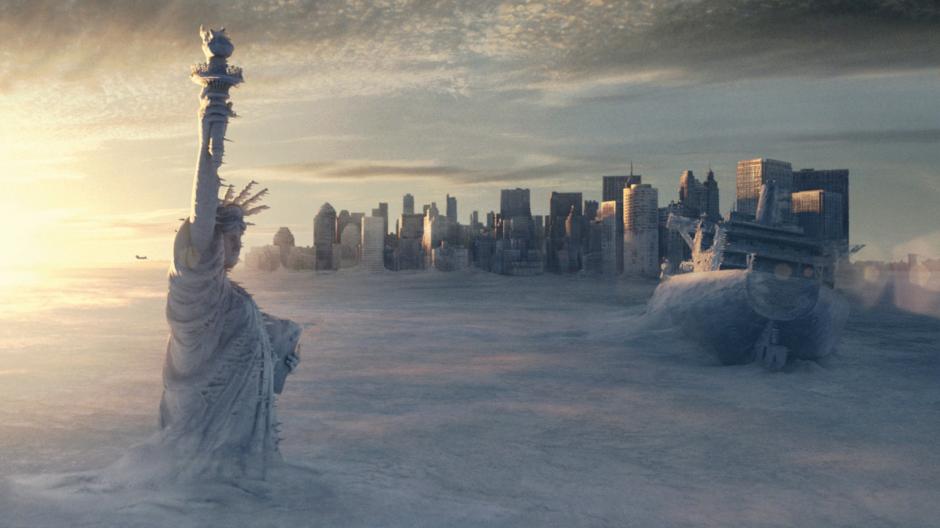
Still from the film “The Day After Tomorrow”
The term “Clay-Fi” was proposed in 2007 by the writer and participant in the movement against climate change, Dan Bloom. He wanted an easy to remember word to draw attention to the problem of global warming. Three years later, Scott Till used the term in an article for Wired, and in 2011, writer Margaret Atwood began to call climate change books Klai-Faye, she used the term on her twitter, thereby informing 500,000 of her subscribers. From this point of view, the clai-fi genre can be called an ultra-modern phenomenon in literature, which arose as a simple Internet meme and turned into a separate genre thanks to the power of social networks.
But works on climate change have met before. Even Jules Verne played on such ideas in his novels in the 80s of the XIX century. The subject of changes caused by human activity did not sound in literature until the middle of the 20th century. With the growing public attention to this problem, she gained popularity among writers.
I tried to arrange in chronological order books that can be attributed to this new genre. I suggest in the comments to add to the list. If there is no translation into Russian, the name of the author, the title of the book in English and the year of publication are indicated in brackets.
19th century
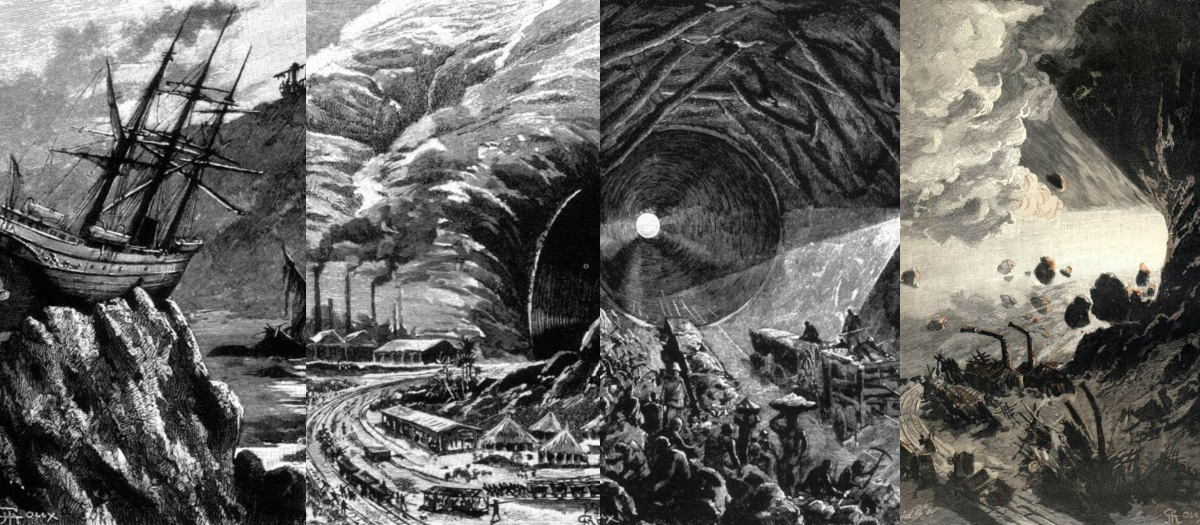
Illustrations for the book "Upside down" wikimedia
In the book upside down (1889), the final part of a trilogy about the "Gun Club" Jules Verne describes the effects of the shift of the earth's axis.
In another of his books, Paris in the 20th century (1863), anti-utopic Paris was shown in the 1960s. The temperature in Europe drops to -30 degrees and the cold continues for three years. The book was published only in 1994. Immediately the novel was not printed (first of all there were more interesting books by Jules Verne), and then the manuscript was lost.
It was discovered in 1989 by Jules Verne's great-great-grandson, in a locked safe. It was considered empty and the key from it was lost. The descendant of the writer decided to make sure of it - and the safe was opened with the help of explosives. Inside found a lot of papers, including the manuscript of the novel. But some sources consider the story of the explosion of an "empty" safe advertising and invented specifically to attract the attention of buyers.
20th century
The action of the novel by Alexander Belyaev. Air seller (1929) takes place in Yakutia near the cold pole. Kommersant Bailey liquefies air from the atmosphere. As a result, the Earth begins to lose the atmosphere and a catastrophic lack of air occurs in the world. Air becomes a commodity.
Alexander Kazantsev, in his work Flaming Island (1936), writes about the island, which has a natural source of catalyst gas, causing the reaction of the compound oxygen and nitrogen in air, accompanied by the release of large amounts of heat. At some point, this reaction started. The huge bonfire, into which the island has turned, devours oxygen from the atmosphere of the planet, gradually making its surface unsuitable for habitation.
In the book of marine biologist Rachel CarsonUnder the sea wind (Rachel Carson, Under the Sea Wind, 1941) there are observations of several coastal zones in the 1930s, some of which no longer exist after the Second World War. Along with the books, the Land of the Sea and the Sea around us, the trilogy explores all ocean life from the shores to the depths.
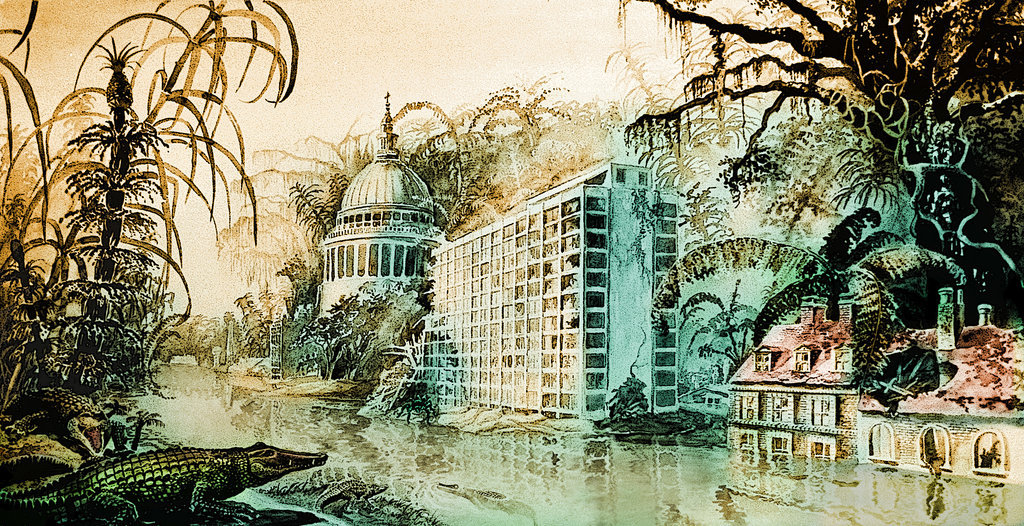
by indojo from deviantart
In the novels of James Ballard Wind from nowhere , Waterworld , the Burnt World (1961-1964) in the center of the plot - natural disasters caused by climate change: in the first one civilization gradually disappears due to the unceasing winds of hurricane force, in the second due to solar radiation the polar ice melts and sea level rises, in the third the climate catastrophe due to disturbance of the precipitation cycle due to industrial pollution.
21 century
2000 - 2010
In the novel Susan Gaines Carbon Dreams (Susan M. Gaines, Carbon Dreams, 2000), the oceanographer Tina Arenas studies the climate of the distant geological past, but her findings have implications for the modern world. Involved in the growing controversy over global warming, Tina is struggling to sort out her conflicting responsibilities to science and society.
In Marcus Sedgwick's novel Flooded Lands (Floodland, Marcus Sedgwick, 2000) global warming leads to a rise in sea level, cities become islands and civilizations are crumbling. Ten-year-old Zoya Black stayed in Norwich, she finds a boat and hides it until she can go to sea to find her parents.
But about Margaret Atwood should tell a little more. So how exactly did she start calling books on climate change clai-fay. Since then, the word has become used more and more. I think now her most famous book is the recently filmed The Handmaid's Tale. The action takes place in the future in the fictional totalitarian state - the Republic of Gilead, which is a pseudo-religious theocracy. Gilead is located on the territory of the modern USA and constantly wages war with neighboring countries. In the future, only one out of a hundred women is capable of having a child, so women from ordinary people are sent to special camps, where they are trained to perform a single function - conceiving and having children for officers whose wives are not capable of it.
And the series of her books related to Clay-Fayu is Oryx and Crake(2003), Year of the Flood (2004), Mad Adam(2013). In the novel "Orix and the Crake" Atwood shows the world, where "social inequality, genetic technology and catastrophic changes in climate led, in the end, to a certain apocalypse." The protagonist of the book, Jimmy, lives in a "world divided between groups of corporations," consisting of cottage communities that have grown and become city-states, and working-class neighborhoods, "dangerous, overcrowded and polluted", where the workers live. The Year of the Flood is an ambitious panorama of the world, which stood on the verge of a man-made catastrophe - and stepped over this line; the world where the ball is ruled by omnipotent genetic engineering and only the helicopter altar gardeners in their garden are trying to preserve the diversity of wildlife. In the third book of the trilogy, the author cites the end of the apocalypse and the birth of a new world.
In the novel for teenagers Julie BertagnyExodus (Julie Bertagna, Exodus, 2003) the island’s population is threatened with flooding due to rising water levels due to melting ice caused by global warming. 15-year-old Mara must find a way to save herself, the village and, most importantly, the whole world.
In Michael Crichton's novel The State of Fear (2004) that the fact that global warming is caused by man is called into question. Climate change is shown as “global pseudoscience hype”, and the scientific view of climate change is being criticized.
In the trilogy of Kim Stanley Robinson Science in the capital(Kim S. Robinson, Science in the Capital 2004, 2005, 2007) shows the near future. An ecological catastrophe is gradually taking place on Earth. Global warming, melting of ice, change in the current of the Gulf Stream, and as a result of all - a violation of the climate throughout the planet, and the onset of the new ice age. Scientists are desperately struggling for the future of humanity, but money, politics and dirty intrigues also interfere in the game.
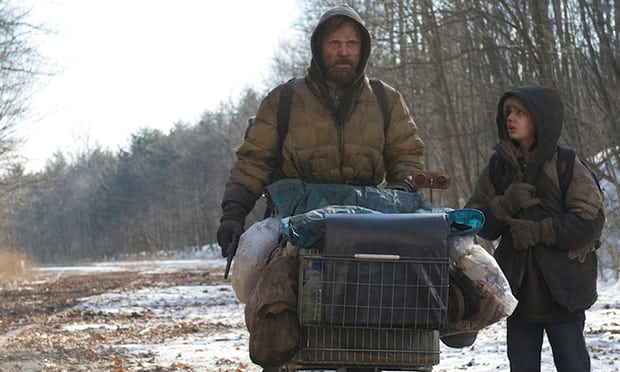
Shot from the movie “The Road”
The action of the novel Cormac McCarthy Road(2006) takes place years after a global catastrophe, perhaps a nuclear war that destroyed cities and caused the death of people, animals and plants. The main characters - the father and the little son, who was born after the disaster - are trying to cross the territory of the former United States on foot and reach the distant and desirable sea.
Jeanette Winterson's book The Stone Gods (Jeanette Winterson, Stone Gods, 2007) talks about the fictional planet Orbus, which is very similar to Earth, and suffers from a lack of resources and the extremely harsh effects of climate change. The inhabitants of the planet are hoping to begin to use the opportunities offered by the new open planet - Blue, which seems to people a wonderful place to live.
The action of the novel by Paolo Bachigalupi Clockwork(2009) unfolds in the 23rd century in futuristic Bangkok. The world of “Clockwork” is a dystopia: as a result of global warming, vast areas of land have been absorbed by the world's oceans, hydrocarbon fuel sources are almost depleted, most of the equipment operates on clockwork springs of various modifications. Biotechnology comes to the forefront: powerful international corporations producing genetically modified crops, animals, and even humans, do not shun bioterrorism, the use of private armies, and political intrigues. Ecological disasters with mass hunger and epidemics that are taking away whole nations have become familiar to the world of “Clockwork”.
The action of his sixth novel Water Cutter(2015) occurs in the near future in the drought-stricken southwestern United States. A journalist describing the death of the city of Phoenix, dares to look behind the scenes of the water distribution system.
The novel Ian McEwan Solar (2010) tells the story of how a physicist explored a way to combat climate change by extracting energy from artificial photosynthesis.
2011 - 2018
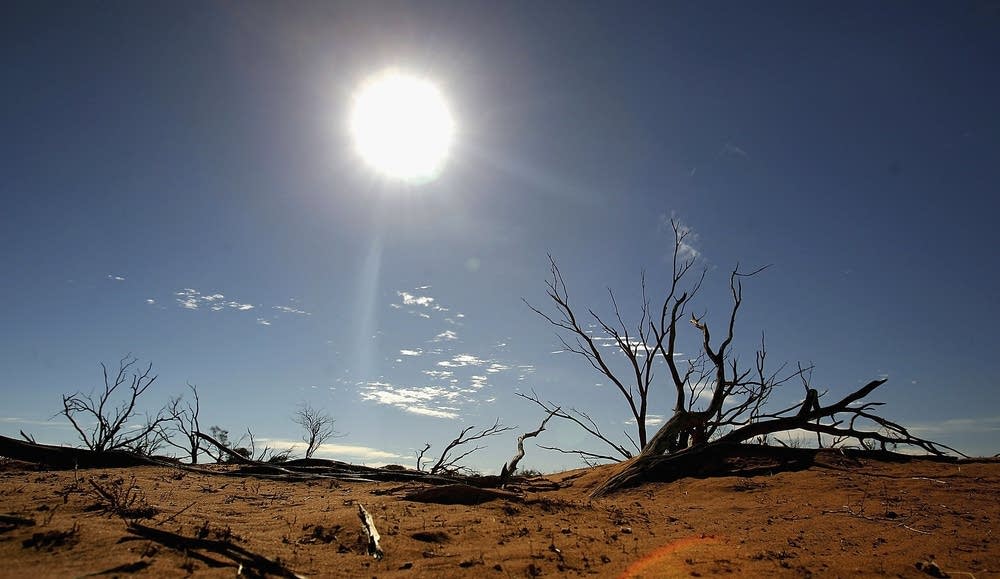
Getty Images
Moira Young's first book, The Chronicles of the Sandy Sea (Mjira Young, Blood Red Road, 2011) opens the Sandy Lands trilogy. Saba spent her whole life in Silverlake, a desert torn by sandstorms. Civilization has long been destroyed, leaving people only garbage dumps. But with Saba, everything is in order so far near her twin brother Lou. When Lou is kidnapped, Saba sets off to find him, discovering the ugly reality of the outside world.
Even the most harmless creature, such as a butterfly, can be a harbinger of a catastrophe. In the book of the American writer Barbara Kingsolver Flight Mood(Barbara Kingsolver, Flight Behavior, 2012) residents of a small village discover that the valley behind their houses is covered with millions of monarch butterflies. A university professor who studies monarchs warns locals that, although the butterflies are beautiful, displaced from their typical wintering grounds in Mexico, they are an alarming symptom of global climate change.
There is no air left in the world. To survive for the air you have to pay. And if there is nothing? And what if you think that things can be different? In a novel for teenagers Sarah Crossan Dyshi(Sarah Crossan, Breathe, 2012) Most of humanity died after falling oxygen levels. Survivors are protected by glass domes. Protected or trapped? Alina believes that the environment can be saved. Quinn never had to worry about having enough air. His friend Beah, on the contrary, only worries about the air. The three of them will change everything.
The protagonist of the book of George Turner Sea and Summer(George Ternet, Sea and the Summer, 2012) Francis Conway — Swill, one of the 90 percent who were forced to exist for state aid in 2041. The boy is growing. Even without that, the difficult life becomes impossible for Francis and others like him, since corruption, ignoring the problems of the authorities and nature conspired to turn the houses of Svill into a water tomb. Now the boy must find a way to escape the oncoming wave of disasters.
Jeff Vandermeer Annihilation(2014). No one knows where Zone X came from - a deadly territory teeming with abnormal phenomena. Monsters do not run there, they don’t bring trophies from there, and profit hunters don’t trade there. A secret government organization sends one research expedition after another to the Zone, but most often they do not return - or return, but subtly and terribly changed. Will the new, twelfth, expedition to the Zone be able to achieve what the predecessors did not succeed in and reveal the secrets of this damned place? What Vandermeer writes is “new strange” (new weird) fantasy, but with Klai-fay it is related by a shift of focus from person to anything. In the “Annihilation” landscapes of Zone X do not need to be seen by people, and the ecosystem takes care of itself and seems to do a good job.
In Emmy's book Itaranta Memory of Water (2014) (published in Finnish in 2011 under the title “Tea Master Diary”), the reader is presented with a world that can become a reality: there is no more winters, the land has turned into a desert, and the rivers have long dried up, leaving the surface of the earth is only scars. It is ruled by the military, who have turned fresh water into a powerful means of controlling people. Water is distributed on the cards, and any violation is punished without mercy.
The new novel by David Mitchell Bone hours(Mere Mortals, 2014) structurally almost completely copies his “Cloud Atlas”. 6 chapters, 6 related stories. In the latter part, which takes place in 2043, the world falls into the End-Amentenment: climate change has depleted resources so much that people must live outside of the earth. Ireland is moderately stable due to a deal with China - but the Chinese stop supporting, leaving Ireland in a state of confusion and violence.
Kirsten Raymond will never forget the last performance of Arthur Linder, the famous Hollywood actor who died right on the stage during the production of "King Lear". After a couple of weeks, the epidemic of the deadly Georgian flu will devastate and destroy civilization ... Twenty years later, Kirsten, along with the small theater troupe "Road Symphony", wanders between the settlements of the survivors and tries to preserve the remains of culture. But after arriving in the town of Saint-Deborah, the abode of the dangerous self-proclaimed prophet, the lives of the actors are at stake. Eerie and lyrical at the same time, Station Eleven Emily St. John Mandel (2014) tells a story about relationships that support us, about the ephemeral nature of fame and about the beauty of the world that we know.
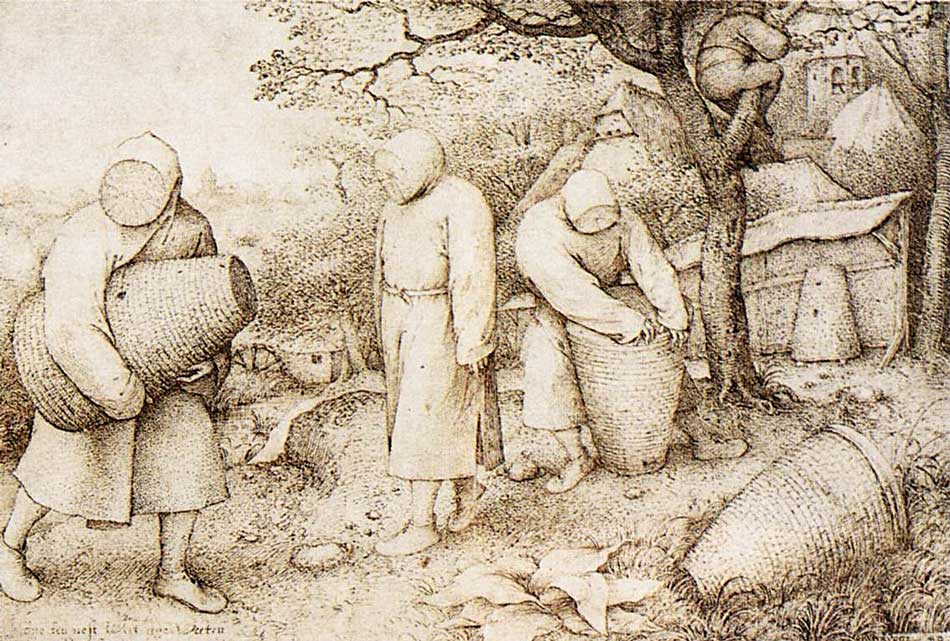
Peter Bruegel the Elder, Beekeepers
Roman Norwegian Maya Lunde The Bee Story (2014) is a dystopia crossed with the family saga.
1852, England. Amateur naturalist William Savage, burdened by a large family and financial difficulties, falls into a depression because he abandoned the dream of his youth - science. Emerging from the spiritual quagmire, he decides to invent a new hive, which will glorify his name and give prosperity to his family.
2007 year, America. George Savage, hereditary beekeeper, dreams that his son will continue his work, but he has other plans. An entirely different tragedy unexpectedly intervenes in the conflict between the son and the father, a far larger scale than family discord.
2098th, China. Thao pollinates fruit trees. Bees have long disappeared from the face of the planet, like other insects. Land covered hunger. The role of pollinators is performed by countless thousands of people who have replaced bees. The predictable life of Tao and her family is blown up by misfortune, behind which stands some mystery.
“The Story of the Bees” is a novel about the irreversible changes that a person makes to the world around.
Gold, glory, oranges(Claire Vaye Watkins, Gold Fame Citrus, 2015) - Claire Watkins' debut post-apocalyptic novel about the South-West of the United States, where there is almost no water left, and the region was cut off from the world. Dried Southern California. Lou, from whom they made a symbol of the environmental movement as a child, and Rei, a deserter who became a surfer, lives squatters in an abandoned mansion. Residents of the region are called "Mojavas", armed militias do not allow them to cross the border to the north, to more water-rich places. Most of them allowed themselves to be evacuated to camps in the east. The remaining few deviators survive on severely limited rations of water and cola, as well as on all that they manage to find and loot. One day they find a mysterious child, and for the first time they have a precarious hope for a better future.
Kim RobinsonNew York 2140(2017). The world ocean level rose, and the streets turned into canals. Every skyscraper has become an island. But for the inhabitants of Madison Square, the New York of 2140 is not a dead city at all. A market trader who knows how to find new opportunities where others find only trouble. A policeman whose work will never end. Together with lawyers, of course. The star of the Internet, whose adventures are watched in a balloon by millions of viewers, and the house manager, who has earned the respect for attention to detail. Two boys who do not belong here, but they have no other house. And these two will be more important for the future than anyone can imagine. And, finally, coders, temporary residents on the roof. With their disappearance, a chain of events will begin that will become a threat to everyone and everything, including the foundation of the city that has long disappeared under the water.
Sources
- Genre Clay fi: Can books save the planet?
- Climate fiction ("Clay") - the best novels
- "The pleasure of watching a dying planet." Clay-Fay Anatomy - books about how nature will avenge a person
- Gold Fame Citrus by Claire Vaye Watkins (2015)
- Word of the week: Cly-Fi
- Rachel Carson. The initiator of the development of a new environmental movement.
- Cli-Fi: Climate Change Fiction
- Sarah Holding’s top 10 cli-fi books
- Five of the best climate-change novels
- 13 Female 'Cli-Fi' Writers Who Are Inspiring A Better Future
- Лаборатория Фантастики
